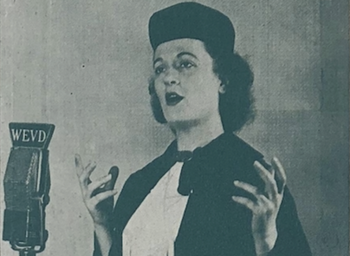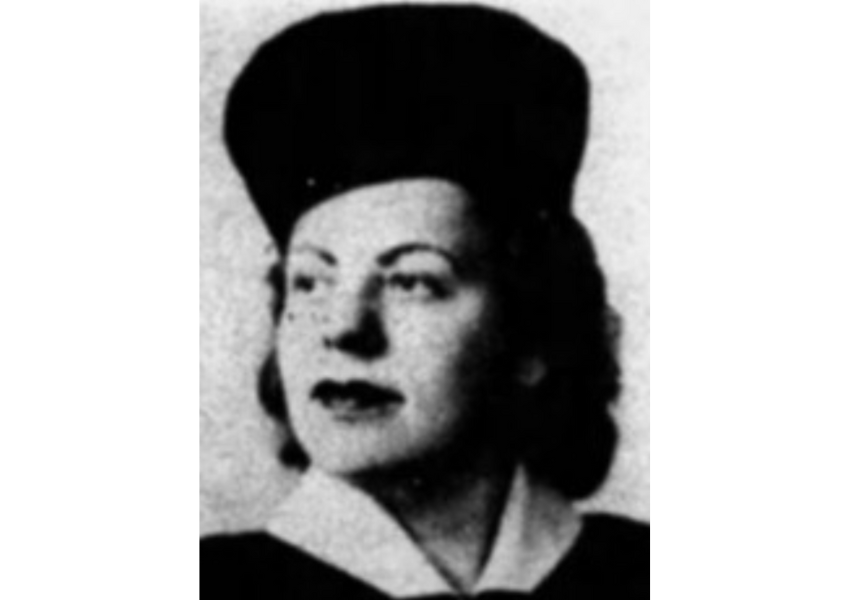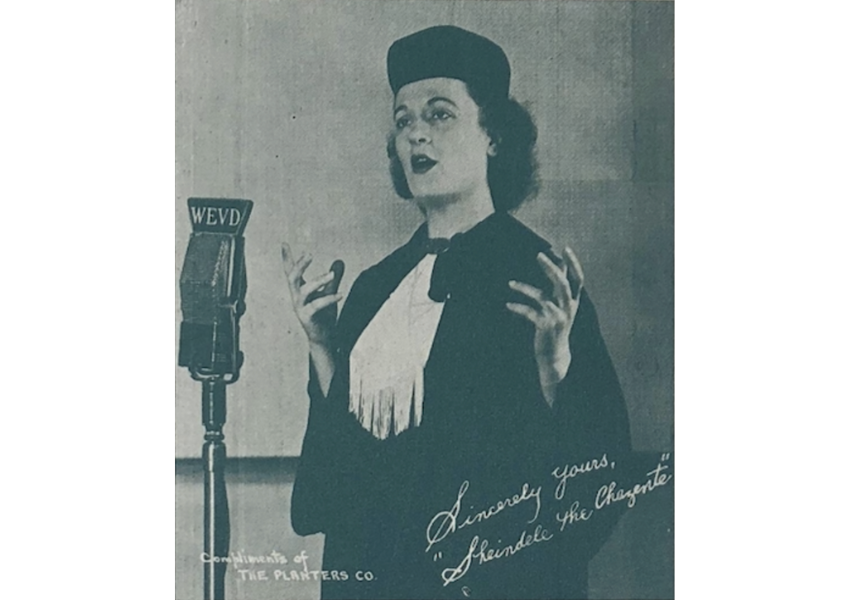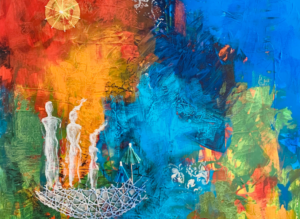The Khazentes: The Hidden World of Early 20th Century Women Cantors
Published Sep 27, 2022

The Khazentes (Part 1/5)

Above: Perele Feig
Khazente, a Yiddish word that means “cantor’s wife,” took on another meaning to describe women cantors who performed and recorded in the “golden age” period of recorded cantorial music (c. 1900-1950). After a period of intense popularity, the work of the khazntes was heavily obscured, almost erased, by a confluence of Jewish institutions that maintained the professional cantorate as an all-male field.
The Khazentes (Part 2/5)
Above: “Yishtabach” perfomed by Perele Feig, live on radio
Normative prescriptions against women’s voices in ritual contexts mostly kept female cantors from singing in the synagogue. Instead, the khazntes performed virtuoso cantorial repertoires in concerts, as performers of cantorial roles in Yiddish theater, sometimes dressed in drag as male cantors, and on records. Despite the richness of this historical moment in Jewish expressive culture, the history of the khazntes is still yet to be written. The only study of the khazentes is Arianne Brown’s unpublished 2005 masters thesis.
The Khazentes (Part 3/5)

Above: Sheindele the Chazente
The first khazente known to record was Madame Sophie Kurtzer (1896-1974), a star of the Jewish concert circuit whose performances attracted audiences in the thousands. Her younger contemporaries included Jean Garnish (1915-1981), who worked under the name Sheindele di Chazente, and Perele Feig (1910-1987). Feig was one of the truly great Jewish voices of the 20th century who had a regular show on the New York Yiddish language radio station WEVD and performed sacred music on stages throughout the United States.
The Khazentes (Part 4/5)
Above: “Tsur Israel” performed by Goldie and the Malavsky Family
Cantorial families were an important source for the transmission of cantorial knowledge. In the period of cantorial music’s popularity as a mass media phenomenon, women in cantorial families had an expanded platform from which to represent their musical knowledge. Freydele Oysher (1913-2004), sister of one of the best known “star” cantors Moishe Oysher, was a star of the Yiddish stage whose performances regularly included show-stopping renditions of cantorial recitatives. The outstanding talent of Goldie Malavsky (1923-1995), the eldest daughter of Cantor Samuel Malavsky, points to the persistence of traditionalism across generations, across the divide of immigrant and “native-born” American, and against the grain of normative gender roles.
In some ways, the golden age of recorded cantorial music was a victim of its own success in speaking the language of immigrant Jewish culture. The ebullient, hyper-emotional and flamboyantly “other” approach to sonic Jewishness represented by Golden Age khazns and khazentes was considered to be incompatible with the development of a rational, Americanized synagogue by Rabbis and communal leaders who ministered to aspirational bourgeois second generation Jews migrating to the exurban suburbs. In the post-WWII era, a seminary-trained cantorate was established as a male-only, unionized workforce serving in synagogues with a professional orientation away from virtuoso music performance towards educational and community functional needs.
The Khazentes (Part 5/5)
Above: “Ha’ben Yokir Li” arranged by Judith Berkson, transcribed from a recording by Sophie Kurtzer (YIVO 2015)
Beginning with the pioneering ordination of Cantor Barbara Ostfeld-Horowitz in 1975, women began to be ordained as cantors in the liberal Jewish movements. Today, the majority of newly ordained cantors are women. This has created the sense that the future of Jewish liturgical music is female, and the past is male. The story of the khazentes complicates this overly simplified binary, showing that the Jewish past, too, was female. The khazentes help us imagine the role that women played in shaping our concept of what sounds Jewish and how to perform the sacred.
This brief introduction to the khazentes ends with a performance by Judith Berkson, an important composer and singer whose work engages with the music of early 20th century cantorial music, reviving and embodying the brilliance of the khazentes.
Jeremiah Lockwood is a scholar and musician, working in the fields of Jewish studies, performance studies, and ethnomusicology.
Reflections
Listen and speculate
How does the gender of performers impact the different feelings or ideas expressed in music?
Deconstruct
Who makes the "rules" about how we listen to male and female voices differently?
Reflect
What sounds Jewish to you?
Want more?
Get curated JewishArts.org content in your inbox


